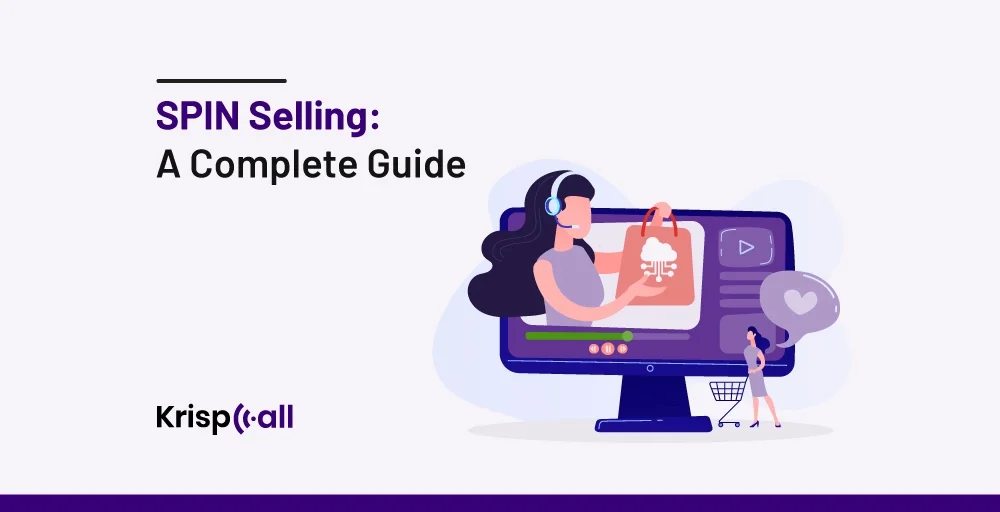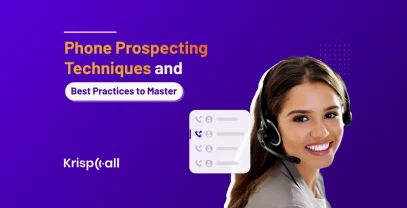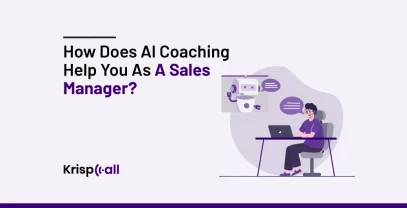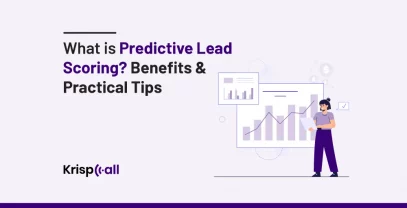SPIN Selling is probably something you’ve heard of before since it’s such a well-known term in sales.
But what exactly is it? What is the reason behind its popularity?
This article will explain what SPIN Selling is, the steps involved, and if it’s still an effective technique today.
We will also discuss the companies that have used SPIN selling and been successful
Let’s check out the most important parts of SPIN Selling and how it could possibly help people who sell things to get more business.
🔑 KEY HIGHLIGHTS
- SPIN stands for Solution, Problem, Implication, and Need-payoff. It is a selling method designed to help reps close difficult, complicated deals by following the SPIN framework.
- The benefits of SPIN selling are improved customer relationships, increased sales and conversion rates, efficient sales processes, adaptability across industries, and a data-driven approach.
- Companies like Nutreco, Essity, and Sopra Steria saw results when they used SPIN Selling. It helped them meet goals and adapt to changes.
- SPIN Selling differs from GAP Selling in its comprehensive approach, exploring implications and need payoff in addition to needs and problems.
What Is SPIN Selling?
SPIN selling is a sales technique designed to help reps close difficult, complex deals. The acronym SPIN stands for different kinds of questions salespeople should ask:
Situation questions ask about the customer’s situation.
Problem questions find out what problems or challenges they’re dealing with.
Implication questions are about what could happen if the problems don’t get solved.
Need-payoff questions determine what customers need and how the solutions can help them.
The SPIN Selling method was introduced by Neil Rackham in his book “SPIN Selling” in 1988. It lays out a sales questioning strategy to understand customer needs and build relationships.
Essentially, SPIN prescribes an order for various types of questions rather than memorized verbatim questions. Reps start with situation questions and progress to problems, implications, and need-payoff questions, which seals the deal. Each stage is important in helping the sales process build towards a close.
Benefits of SPIN Selling
SPIN selling provides the following benefits if implemented correctly:
- Improved Customer Relationships: By taking time to listen and understand customers, SPIN selling helps representatives build stronger bonds. Asking questions shows clients you care about solving their actual problems. This develops trust and earns their appreciation for finding tailored solutions.
- Increased Sales: When salespeople know a client’s specific needs, they can present how their product is the ideal answer. SPIN techniques make customers more convinced since reps address what’s really important. This persuades more potential buyers to complete a purchase.
- More Efficient Sales Process: Having clear stages provides reps with goals for each part of discussions. It leads representatives down logical paths to gather key details at the right time. This organized approach saves time and also make your sales process more efficient.
- Data-Driven Approach: SPIN helps reps track information about problems and what customers need. This quantitative feedback aids refinement, like reworking questions that could yield better information. The whole selling team learns from real experiences with customers. They constantly find ways to improve their skills based on the facts of how sales actually go.
Cons of SPIN Selling
Even though SPIN selling is an effective sales method, it has some drawbacks, such as:
- Steep Learning Curve: It takes a lot of practice to learn how to actively listen, ask the right questions, and properly move the discussion to the next step. The reps have to forget old ways of doing things and learn new skills. Because of this, SPIN can be hard to use correctly from one day to the next. It takes time to get good at the SPIN method.
- Time-Consuming: Spending more time gathering information at the beginning of the sales process means each deal takes longer to finalize. Following the stages also adds more steps compared to quicker strategies. The method can feel slightly tedious, although it pays off in customer satisfaction and increases the odds of closing.
- Potential for Manipulation: While the goal is understanding clients, unethical reps could misuse powerful questioning to steer conversations their way instead of truly learning needs subtly. SPIN requires integrity from representatives to ensure the focus stays on value over tricking buyers into purchases they don’t really want or need.
SPIN Selling Summary
SPIN focuses on sales reps asking good questions at the right moments. When used correctly, the SPIN method helps reps understand customers’ common issues. This lets reps show how their product can solve the customer’s problems, making it easier for the rep to make the sale.
SPIN questioning follows four key parts, which is where it gets its name:
- Situation questions help to learn about customers’ goals by asking what they currently do, use, and want to achieve.
- Problem questions find the challenges a customer faces so reps can address their needs.
- Implication questions show how problems might get worse over time and increase pressure to solve them.
- Need-payoff questions reveal how the product helps the customer, so it should be considered.
Instead of using the same script each time, SPIN teaches flexibility. Reps ask questions based on the specific situation to move customers through the process of considering a purchase. When done right, SPIN helps reps have useful talks to understand customer needs and sell solutions to those needs.
What Companies Use SPIN Selling: Case Studies
Businesses have greatly benefited from using SPIN selling. Here are the 3 case studies that show how transformative it is.
A. Nutreco Case Study
How Nutreco used SPIN Selling to meet its strategic sales objectives and adapt to new challenges.
The Challenge
Nutreco wanted to improve the way their sales team sold more technical products, especially since people had started working remotely more during COVID. They needed a better way to provide advice to customers.
The Solution
Nutreco started using the SPIN Selling method and had managers do SPIN Coaching. This helped the managers improve their jobs, and all the salespeople in different countries learned new selling skills. SPIN Selling and SPIN Coaching improved everyone across the company’s sales work.
The Result
Using SPIN Selling helped Nutreco focus on adding value for their customers. They made more money, worked better as a team, and had happier customers. The company kept checking back on how things were going to ensure they changed anything needed as the market changed over time. SPIN Selling helped Nutreco adapt and keep improving to meet customer needs even as things changed in their industries.
B. Essity Case Study
Essity wanted their sales and marketing teams to properly support the company’s goals for sustainability.
The Challenge
The challenge for Essity was to develop sales skills that could ensure sustainability was part of every conversation with customers but in the right way. They needed to come up with a sales method that allowed salespeople to talk about the importance of sustainability in a fair manner that customers would trust.
The Solution
Essity’s different work groups came together using the SPIN Selling method. They also used SPIN Marketing, which helped support SPIN Selling. This allowed the teams to figure out where each customer is at in their efforts to be environmentally friendly. The salespeople asked questions about how important quality and proper usage are to customers. They understood that customers need to learn more about the full life of the products from start to end.
The Result
The teams that learned SPIN Selling were able to provide real value and benefits to customers based on what each customer actually needs. Instead of just making a quick product sale, they were able to have discussions that created an ongoing, sustainable business relationship.
C. Sopra Steria Case Study
Sopra Steria was preparing for what life could be like after COVID-19 ended. They were using Huthwaite training to improve their sales and negotiation skills. They wanted to become leaders in their industries and really help their customers.
The Challenge
Sopra Steria needed to develop a real sales mindset and strong selling abilities in people on their teams who don’t normally like to sell things or negotiate deals. The challenge was teaching selling skills and a sales attitude to people who aren’t enthusiastic about pitching to customers or bargaining with clients but must do it well in tough economies.
The Solution
Sopra Steria decided to give their client-facing teams full training in SPIN Selling, SPIN Opportunity Management, and Complex Negotiation skills from Huthwaite. Learning these methodologies would help everyone agree on the same way to talk about selling and deal-making.
The Result
The Huthwaite training programs really spoke to the consultants and pushed them to improve their talk with clients. The consultants also learned how to build stronger relationships with their existing customers. Plus, they learned to negotiate deals more successfully. Because the programs challenged the consultants, they felt motivated to improve at conversations, selling, keeping clients happy, and bargaining – which led to positive results for Sopra Steria.
SPIN Selling Vs GAP Selling
SPIN selling goes deeper by exploring the implications of problems and paying off the solution. It’s a more comprehensive approach, whereas GAP selling mainly focuses on discovering customers’ needs (where they want to be) and problems (where they are currently).
This table will help to understand the key differences between SPIN selling and GAP selling:
| Aspect | GAP Selling | SPIN Selling |
| Focus | Identifying the GAP between customer’s current state and desired state through needs and problems questions. | Thoroughly exploring the situation, problem, implications, and how the solution meets needs through stages of questioning. |
| Question Types | Questions about needs and problems. | Questions to understand the situation, probe into problems, implications, and solution fit. |
| Complexity Level | Works for some simple sales. | More comprehensive approach better suited to complex deals. |
| Customer Engagement | Asks questions to identify GAP between customers problems and your solutions. | Asks questions at each stage to get customer to realize solutions on their own. |
| Relationship Building | May not connect all dots for customer. | Thorough questioning leads to stronger relationships through the demonstration of understanding unique needs. |
| Close Rates | Potentially lower close rates. | Generally higher close rates through addressing the full picture of needs. |
| Long Term Success | Limited insight into full challenges. | Sets up longer-term success through comprehensive needs-based solution fitting. |
SPIN Selling Methodology
SPIN selling has four main phases that sales reps should follow during conversations with customers.
- The first stage is Situation: In this part, the rep asks questions to figure out where the customer is starting from. They want details on stuff like current systems, day-to-day operations, important projects, etc.
- Next comes the Problem: Now the rep digs deeper by asking questions to uncover specific troubles or pain points the customer deals with regularly. What issues cause delays, frustration, or inefficiency?
- The Implication is the third stage: Here, the salesperson questions how those problems might impact other areas if left unsolved. For example, could productivity or customer satisfaction go down over time if [X] issue is not fixed?
- The last stage is Need-Payoff: This is when the rep presents solutions and how they directly remedy issues. But they do it in a way that highlights the benefits important to that unique customer’s circumstances.
Following these four stages step-by-step usually leads to more successful sales. It keeps conversations organized around learning the full details of what’s needed for each customer. The thorough questions SPIN provides strengthen relationships too.
SPIN Selling Questions
To properly apply the SPIN technique, salespeople must fully grasp the four SPIN question categories and how they constructively progress during a call. This section provides an overview of SPIN selling examples of each type, highlighting important details.
Situation Questions
All too often, sales reps are too eager to jump straight into pitching their product without understanding the client’s full context. But as Rackham pointed out, this approach focuses on the wrong thing.
“The best selling isn’t at all about your products and what you can offer. It’s very much about the customers and their needs.” – Neil Rackham.
This first step, appropriately called “situation questions,” aims to gather helpful details. Here are some SPIN situation questions to get started:
- What do your (the client’s) current work processes look like?
- What tools or equipment are you already using now?
- How often do you use those tools or that equipment?
Starting with situation questions lays important groundwork for the sales process. It helps reps understand the customer’s perspective and enables them to tailor subsequent questions. Exploratory inquiries about needs, goals, challenges, and budgets paint a full picture of their current business environment. This allows reps to position the product appropriately within that context.
Problem Questions
Selling your product means you have a solution. Problem questions help surface different problems your solution can solve for your clients. At this point, do not mention your specific product—save that for later.
Like situation questions, problem questions should guide. Rather than declaring problems, ask in a way that leads clients to identify their own challenges. Rackham explained that reps need to discover the client’s issues since people without apparent problems won’t see a need.
Let’s say you sell a tool for managing projects. Key benefits are improved communication and efficiency through organization, saving project teams time. Your problem questions here would center on those perks but avoid your product directly.
Some example problem questions are:
- Do you feel cross-team communication is as strong as possible?
- How much time does process X take?
- How might this impact stakeholder support?
Skillfully asking problem questions means anticipating obstacles clients haven’t considered, building urgency to actually solve issues, and potentially using your solution. So this phase helps uncover answers for clients as much as for you to better understand needs.
Implication Questions
Once you’ve pinpointed key customer challenges, implication questions explore the possible causes and effects of those pressing issues. Showing clients the impacts of their main pain points boosts the urgency set during the problem-questioning stage. Again, avoid referencing your product—the focus remains on understanding client needs.
Not all problems warrant equal attention. Initially, a client may view identified problems as mere inconveniences not needing addressing. Implication questions are useful to demonstrate why resolution is important. For instance, some implication questions could be:
- How much time does inefficient communication waste weekly?
- What more could teams accomplish each week without those time sinks?
- Have communication problems ever delayed product launch?
Implication questions are designed to elevate minor problems clients may overlook and stress why solutions are truly necessary.
Need-Payoff Questions
Need-payoff questions, when done correctly, tie together the previous SPIN questioning stages. They rely on how well earlier questions established the problem-solution relationship between the product and the customer’s needs. Rather than stating how your offering addresses pain points, need-payoff queries guide clients to their own conclusions.
If the situation, problem, and implication questions were effective, clients should recognize the need for resolution. Now, aim to position your solution as the choice. However, still frame it as a discussion – don’t directly tell clients how you solve issues. Ask in a way that answers reveal the product’s value or payoff. Constructing need-payoff questions well takes skill.
Some examples are:
- Would a product management tool boost stakeholder support?
- Would more efficiency benefit your teams?
- Why is capability X important to your business?
Letting customers connect the dots on assistance without hard selling yields a stronger presentation than direct statements of how you think you can assist. The goal is clients concluding solutions for themselves through discussion.
The 4 Stages of SPIN Sale
According to Rackham’s book, every sales process involves four main stages:
- The Opening Stage
- The Investigating Stage
- The Demonstrating Capability Stage
- The Obtaining Commitment Stage
For complex B2B sales, completing all stages could take several months to years. Customers progress from one stage to another by taking actions like requesting a free trial or quote.
Rackham refers to these as “advances”. You should identify as many relevant advances as possible. Having multiple paths to the sale increases the chances prospects will reach that point. The more options to advance the conversation, the more likely a deal becomes.
1. Opening Stage
Don’t immediately highlight your product’s perks—this overly pushy technique will alienate prospects and prevent you from collecting important details.
This initial stage aims to grab the buyer’s interest while beginning to build trust. Instead of pitching, provide thought-provoking perspectives and ask relevant inquiries to spark meaningful discussion that prospects will recall. The goal is to engage them through conversation, not come-ons about features and benefits
2. Investigating Stage
The investigating stage is the most crucial part of SPIN Selling. During this phase, you determine how your product could benefit the customer. This involves identifying their priorities and deciding factors for making a purchase.
The aim is to understand the client’s unique situation and needs deeply. This insight equips the salesperson to position the solution appropriately and have discussions customized to that particular prospect. Asking situation, problem, and implication questions provides the data required to establish where assistance could make the most impact for that individual business.
3. Demonstrating Capability Stage
Once you’ve linked your solution to the customer’s needs through questioning, the next step is persuading the buyer that the relationship is valid and merits their consideration of your offering.
At this phase, you need to convince the prospect that the tie between the solution and requirements is worth their investment of time, effort, and funds. Your exchanges up to this point should have laid the appropriate groundwork and now involve clearly presenting how you can create value by addressing the priority issues that surfaced earlier in the sales cycle.
4. Obtaining Commitment Stage
There are four potential outcomes for every sales call:
- Order – You made the sale!
- Advance – The prospect progressed further in their buying process.
- Continuation – The opportunity remains open but their status did not change.
- No-sale – This prospect will not buy. The opportunity is lost.
You should establish your objective ahead of each call aligned with where the client currently stands. While the ultimate goal is to sell, that shouldn’t be the aim of every call as it could disrupt the client’s own pace of progress.
Securing the appropriate level of commitment incrementally throughout the sales cycle determines closing success. The focus should be moving discussions and customers toward the next natural step.
SPIN Selling Training
Since SPIN Selling was developed from research examining verbal exchanges during actual sales meetings, the most effective way to develop this skill set involves interactive practice.
Adopting a structured sales methodology provides competitive benefits for businesses. It establishes consistency and discipline in sales strategy while boosting representatives’ confidence.
This kind of training requires a certain teaching style, usually taught by groups that only teach SPIN selling, such as Huthwaite International. Simulating real conversations with customers helps reps learn SPIN selling the most.
SPIN training does more than just teach effective questioning – it provides the skills needed to thrive as a salesperson/team currently. This includes:
- Identifying new opportunities when outdated techniques or changing prospects require different tactics.
- Understanding where and why sales fail and measuring success to improve future discussions.
- Rebuilding confidence for teams that are demotivated by ongoing losses.
- Determining approaches for prospects who are not seeking solutions or during periods of uncertainty.
- Maintaining a solid strategy when sales teams cannot meet in-person consistently or must operate virtually.
But for the training to really work, people need to be open to more than just learning the SPIN method. Companies also need to be willing to change how things are done. Everyone has to be open to new ideas for the full benefits of SPIN selling to take hold. It’s not enough just to learn the steps – people must embrace changes to fully gain from understanding the SPIN approach.
SPIN Selling Best Practices
To implement SPIN selling in the best way possible, here are some practices to follow:
- Use open-ended questions: Ask questions that prospects can’t just say “yes” or “no” to. Choose questions that get more details instead of ones they can quickly say no to and move on. Based on what they say, ask more questions if needed to find out more info.
- Avoid using generic questions: Don’t use the same questions for everyone without changing them to better suit specific situations. Tailor your questions to learn important information about each customer’s unique business. Research their industry beforehand so your questions show you understand their challenges.
- Listen attentively: Pay attention to what customers say instead of just waiting to talk. Focusing on their answers helps uncover key problems and needs. Take notes on what they say so you remember important details to reference later.
- Avoid asking too many questions: Don’t bombard people with too many questions back-to-back. Space them out and add your own thoughts so the talks feel balanced, not like an interrogation. Mix in your thoughts, showing you listened and can relate to their perspective.
- Practice your delivery: Practice how you ask questions and move the discussion along. Get comfortable so questioning feels natural and gives helpful information for both sides. Role-play, and mock conversations with colleagues to get used to thinking on your feet.
Conclusion
Sales calls in which the rep only talks about themselves and their product will not close deals—they will ruin any chance of a sale. This is similar to when no one wants to go on a one-sided date where the other person never asks about you.
If a salesperson doesn’t ask the customer any questions, the customer will feel ignored. Using the SPIN selling steps can improve the sales process by making the rep more caring and focused on listening more than talking.
FAQ
Does SPIN selling still work?
Yes, SPIN selling works just as well, even in 2024, because SPIN helps ensure reps personalize their conversations to address buyers’ unique situations versus a one-size-fits-all pitch. That’s why the SPIN method remains effective – it makes the customer the main focus.
What is the SPIN selling formula?
The SPIN selling formula has 4 steps:
- Situation: In the first part, find out what’s going on for the customer right now. What are they doing, using, and dealing with at this time?
- Problem: Next, uncover specific troubles or issues the customer has. What problems are they having that your product could help with?
- Implication: Then, ask how those problems might affect other things down the road. What causes the problems, and how could they get worse over time?
- Need–Payoff: Finally, show them how your product solves the problems and why it’s worthwhile. Prove why your solution is worth it for meeting their needs and fixing the issues that cause problems.





